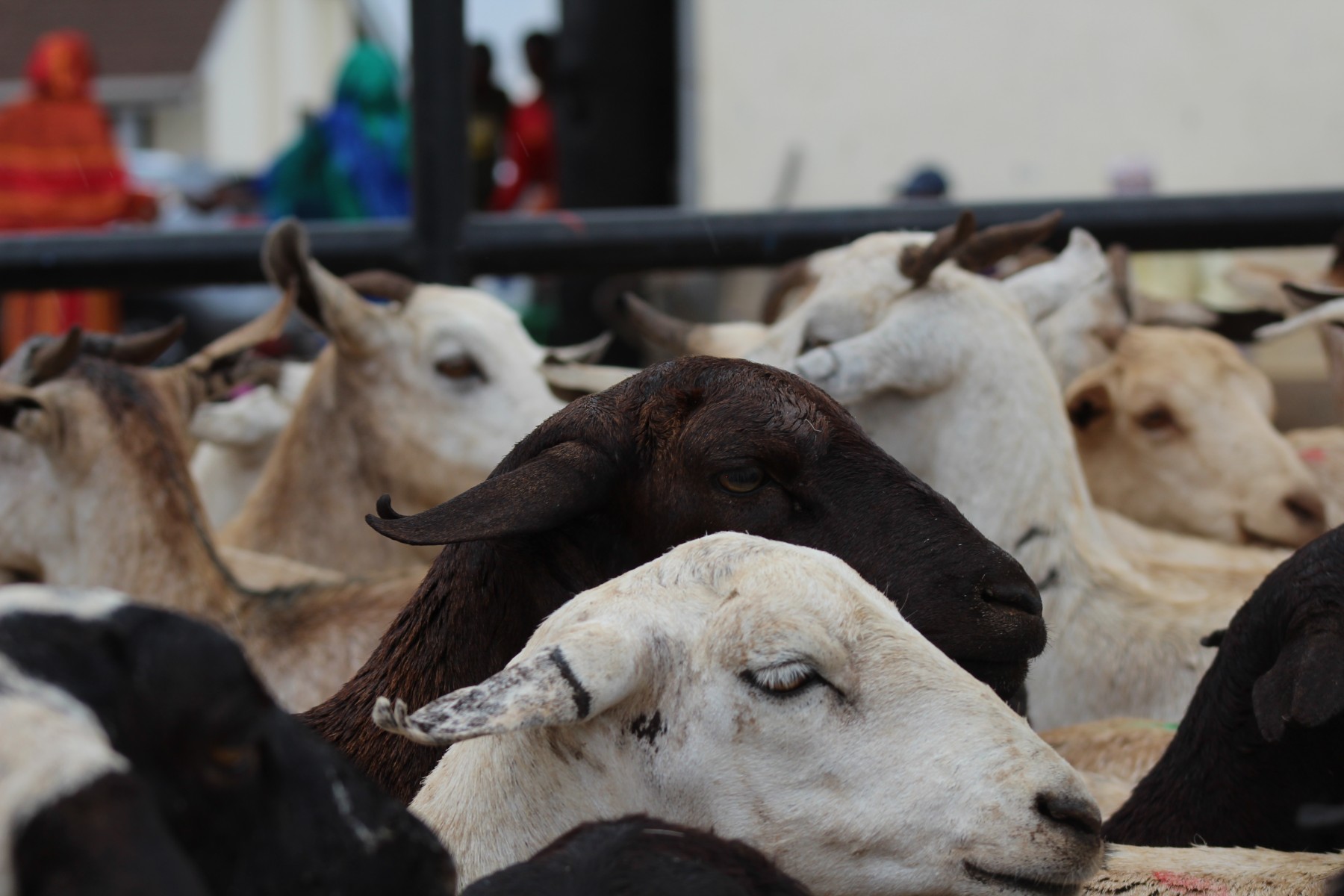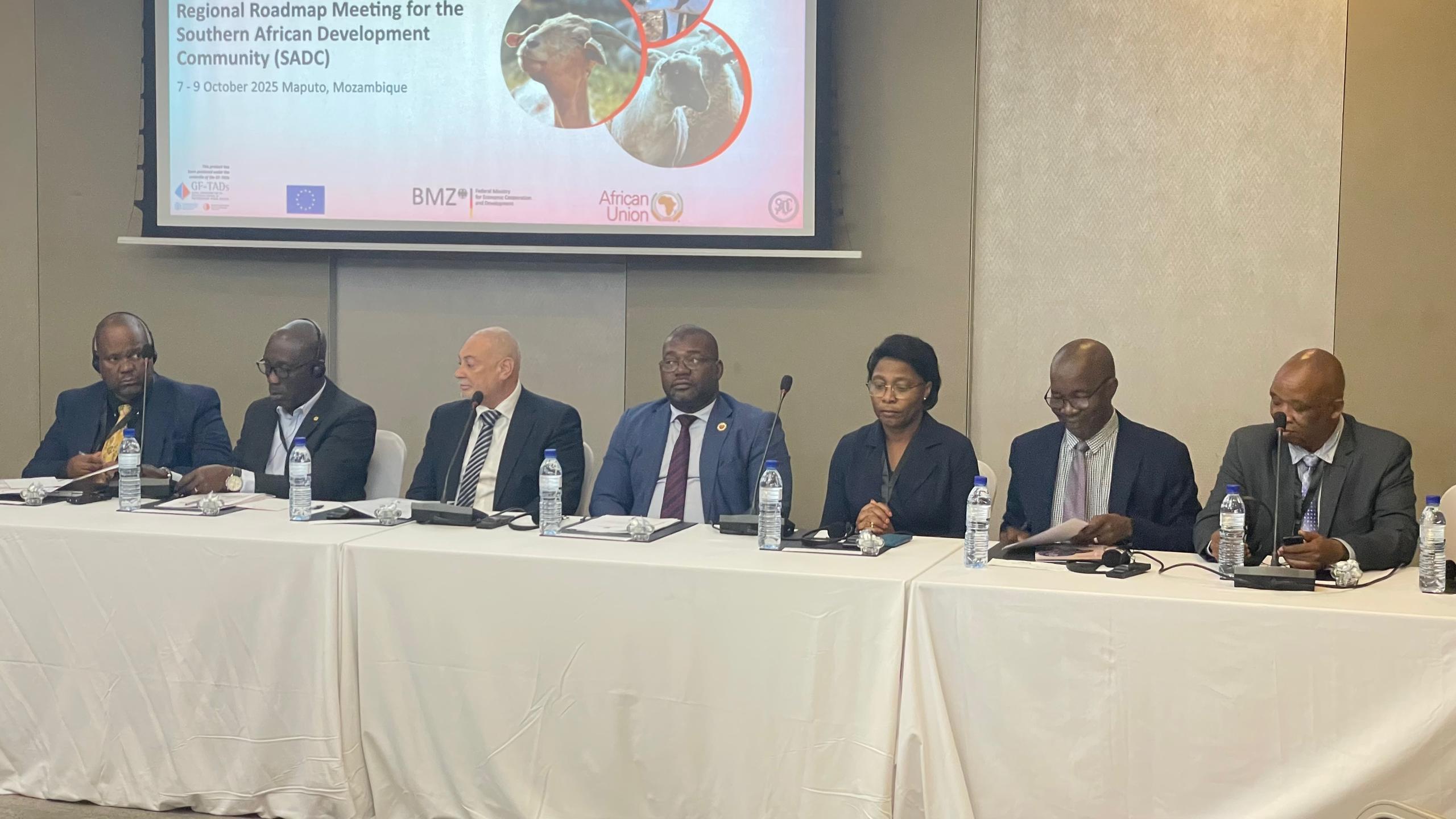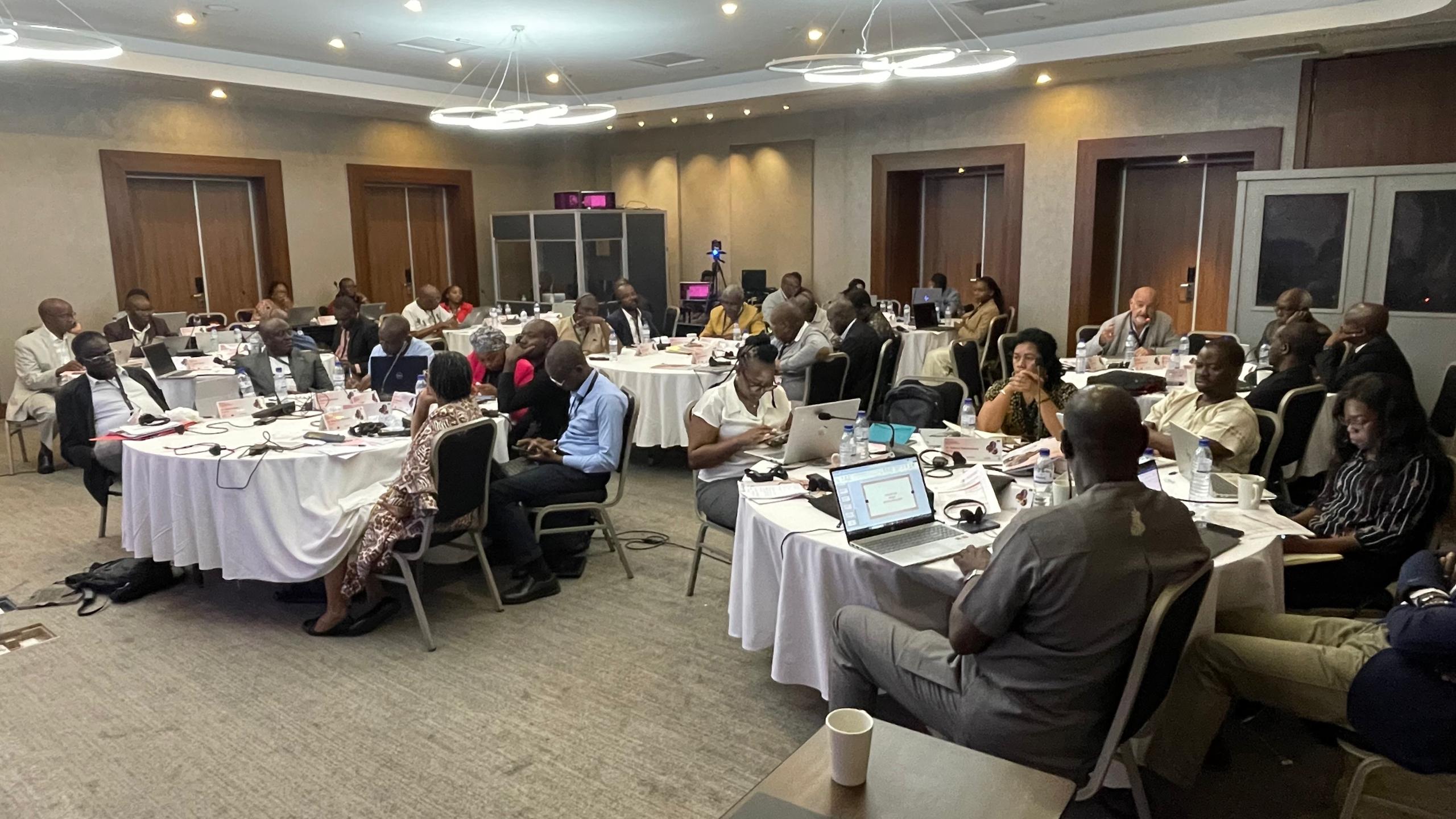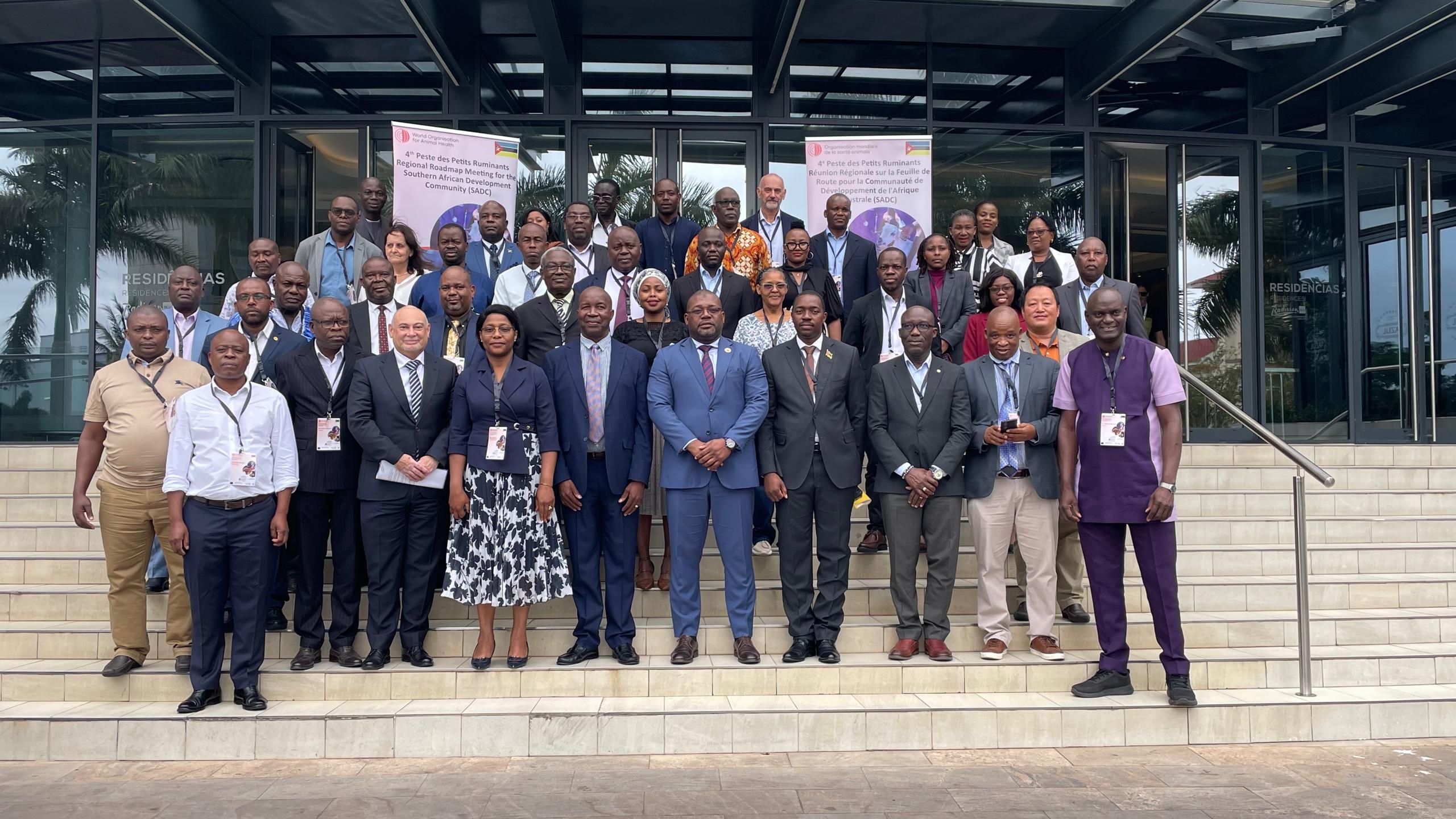
Overview of the participants. Picture (c) communication (woah) 2025.
In a strategic gathering aimed at eradicating one of the most devastating livestock diseases – Peste des Petits Ruminants – in the region, the 4th Peste des Petits Ruminants (PPR) Regional Roadmap Meeting for the Southern African Development Community (SADC) Member States was held in Maputo, Mozambique, from 7 – 9 October 2025. Hosted at the Radisson Blu Hotel, the meeting brought together Chief Veterinary Officers / WOAH Delegates and PPR Coordinators from SADC Member States, technical experts, and regional partners to assess progress and chart a path toward eradicating PPR by 2030.
Opening remarks were delivered by the WOAH Regional Representative for Southern Africa, the FAO Representative in Mozambique, the representatives from AU-IBAR, AU-PANVAC and the SADC Secretariat.
All speakers underscored the socio-economic importance of PPR eradication and reaffirmed the global goal to eliminate the disease within the next five years-by 2030.
The meeting was officially opened by Mr Momade Juízo, Secretary of State for Sea and Fisheries within Mozambique’s Ministry of Agriculture, Environment and Fisheries (MAAP). In his address, Mr Juízo emphasised that PPR eradication is a pivotal milestone for livestock production, food security, and regional development.
“No country can win this battle alone,” he stated, calling for a united regional approach.
He advocated for sustainable funding, strengthened capacity building, robust quarantine systems, targeted awareness campaigns, and unwavering political commitment. He affirmed that Mozambique stands ready to walk alongside fellow SADC nations in the journey toward a PPR-free region, stressing that disease eradication is not merely a technical goal—it is a moral and economic imperative.
Peste des Petits Ruminants, a highly contagious viral disease affecting sheep and goats, continues to threaten the livelihoods of over 330 million rural families globally. It affects over 70 countries in the world. In the SADC region, sheep and goats are not only a vital component of the livestock sector but also the foundation upon which millions of rural households depend for their livelihoods. Statistics show that the SADC region is home to approximately 96.8 million small ruminants, which provide food, income, social capital, and even cultural identity to rural communities. It is estimated that PPR causes an annual economic loss of between 1.5 and 2.1 billion US dollars in Africa. This is not a distant figure; it represents the real suffering of thousands upon thousands of families. The encouraging news is that the Southern African region is at the forefront of achieving the global goal of PPR eradication by 2030.
Currently, among the 16 SADC member states, seven countries—Botswana, Eswatini, Lesotho, Madagascar, Mauritius, South Africa, and the southern parts of Namibia—have obtained official WOAH PPR-free status. Another five countries—Malawi, Mozambique, Zambia, Zimbabwe, Seychelles, and the Northern Communal Area of Namibia—have a history of never reporting PPR and are at a critical stage of applying for PPR-free status. This means that most countries in the SADC region are either PPR-free or are close to achieving the free status. SADC is just one step away from the goal of regional eradication. However, PPR does not respect national borders. As long as the virus continues to circulate in some countries, the entire region remains threatened.
In 2015, the Food and Agriculture Organization of the United Nations (FAO) and the World Organisation for Animal Health (WOAH) launched the PPR Global Control and Eradication Strategy (PPR GCES), with the ambitious goal of eradicating the disease by 2030. The second and third phases of the PPR Global Eradication Programme (PPR GEP II and III) were launched in November 2022 as the “Blueprint for PPR eradication by 2030”. The primary objective of the PPR GEP Blueprint is the eradication of PPR by 2030, as well as the reduction of the impacts of other high-impact and zoonotic small ruminant diseases.
The launch of Pan-African Programme for the Eradication of PPR and Control of Other Priority Small Ruminant Diseases is a key milestone in advancing the goal of PPR eradication in Africa.
The Maputo meeting assessed the status of the disease, reviewed progress made since the 3rd roadmap meeting held in Gaborone, Botswana in 2022, assessed national strategies, and discussed the establishment of a buffer zone in Angola, Congo (DRC) a,d Tanzania to prevent further spread of disease into Southern Africa region.
Participants agreed on key next steps, including intensified surveillance, harmonized vaccination campaigns in infected countries, and submission of PPR freedom dossiers to WOAH. As the countdown to 2030 continues, the Maputo meeting reaffirmed regional solidarity and commitment to eradicating PPR—protecting livelihoods, strengthening animal health systems, and advancing sustainable development across Southern Africa.



